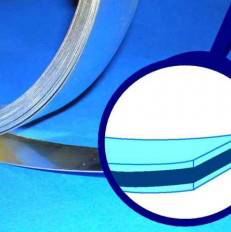Silicon carbide materials have lots of special properties, such as excellent high temperature strength, good corrosion and wear resistance, making them widely used in high temperature applications. Like most ceramic materials, SiC ceramics also show poor performance in ductility, toughness and processability. To make full of the properties of SiC, it is necessary to join the SiC and metal. In aerospace area, it is valuable to join SiC ceramic with Ti alloy, and the joining methods are usually brazing and diffusion bonding. The diffusion method generally need smooth brazing surface, high bonding pressure and bonding temperature. Comparatively speaking, the requirements of machining accuracy for brazing are relatively low, with great applications and developing space.
Comparing with ceramic and ceramic joining, the large residual stress was generally induced during cooling in the ceramic and metal joint due to the difference of CTE and elastic modulus between ceramic and metal. The widely used Ag-Cu-Ti active brazing alloy shows good wettability and bonding strength to most ceramics and metals, and it also exhibits low brazing temperature, avoiding fracture of substrates in the high temperature. However, this kind of brazing alloy shows poor performance in high temperature (>500℃) and it can not alleviate the residual stresses in the joint due to the CTE difference between the joined materials. Therefore, some researchers try to incorporate reinforcement particles in the brazing alloy, such as Al、TiC powders. These reinforcements could react in situ and import new phases in the joint, alleviating the CTE mismatch between the brazing alloy and ceramic substrates and improving the joint performance.








